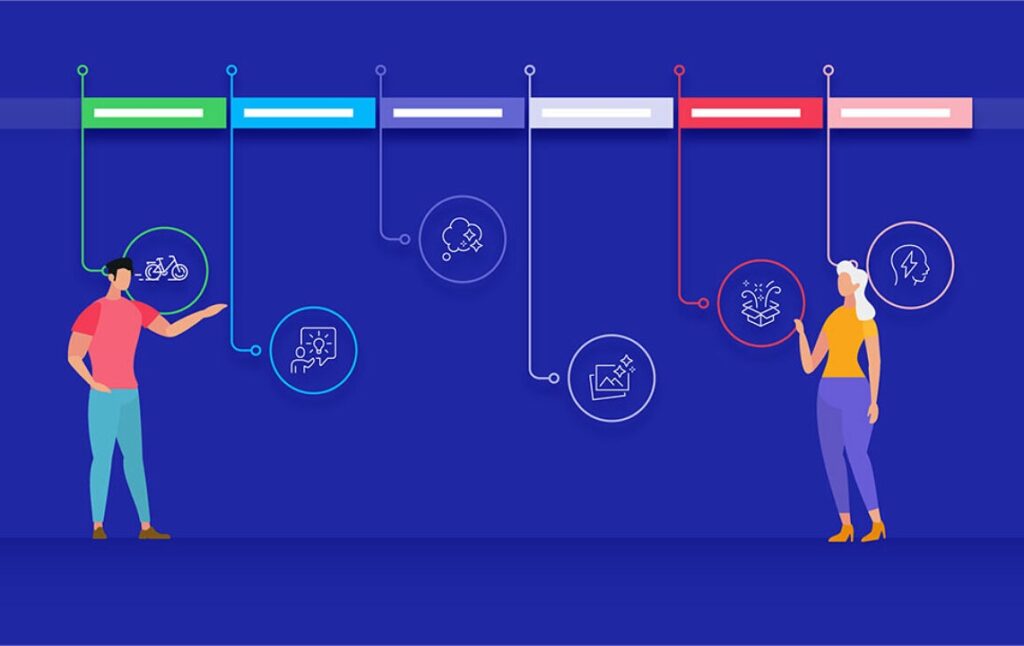Data Strategy
Data Strategy and Data Management Solutions
An enterprise data strategy is the comprehensive vision and road map for an organization’s potential to harness data-dependent capabilities. It represents the umbrella for all domain-specific strategies, such as master data management, business intelligence, big data and so forth.
The importance of data strategy
Virtually every business collects data in multiple forms, and a data strategy enables a business to manage and interpret all of that data. It also puts a business in a strong position to solve challenges such as:
- Slow and inefficient business processes
- Data privacy, data integrity, and data quality issues that undercut your ability to analyze data
- Lack of deep understanding of critical parts of the business (customers, supply chain, competitive landscape, etc.) and the processes that make them tick
- A lack of clarity about current business needs (a problem that descriptive analytics can help solve) and goals (which predictive and prescriptive analytics can help identify)
- Inefficient movement of data between different parts of the business, or duplication of data by multiple business units
In short, a business without a data strategy is poorly positioned to operate efficiently and profitably or to grow successfully.

Our Approach

Identify and prioritize big data use cases
Don’t boil the ocean applies here. In formulating a big data strategy, start small, think big, iterate often — and think in terms of use cases. Identify big data use cases that meet your business objectives outlined in step one. Use big data analytics to examine your large volumes of data to uncover hidden patterns, correlations and other insights. These exercises should help you build out and refine use cases.
Define the business goals and objectives
It should come as no surprise that in order to have a successful big data strategy, you must first define what business objectives you are trying to accomplish. Not every business is the same, so there is no one-size-fits-all answer here. However, you should make sure that your strategy aligns to your overall corporate business objectives while also addressing key business problems and key performance indicators.
Identify data sources and evaluate processes
The next step involves identifying the variety of your data as well as assessing current business processes, data sources, data assets, technology assets, capabilities and policies at the organization.
Once you have identified sources of data, run an assessment on your data strategy. Make sure to address the business objectives you outlined in step one and work from there.
Create a roadmap for big data projects
Once you have identified your business objectives, gotten an understanding of your data and current capability state and identified use cases, you can now begin to plot out a big data roadmap.
0
%
Through 2025, more than 75% of MDM programs (Master Data Management) will fail to meet business expectations because of a failure to connect MDM value to business value.
0
%
By 2025, 50% of CDOs will achieve digital acceleration goals using augmented data management practices across MDM (Master Data Management) , data hubs, data quality and integration.
Our Services

Business strategy
Your data strategy should reinforce and advance your overall business strategy, which refers to the processes you use to operate and improve your business. To that end, establish clear goals and measurable objectives for your data strategy that serve your larger business strategy.

Organizational roles
A data strategy should include attention to organizational roles by documenting who does what with the data, in order to facilitate collaboration and avoid duplication. Not everyone in an organization uses data the same way, and their roles in data collection, management, and analytics will vary.

Data architecture
Your data architecture consists of the tools and processes that allow you to work with and analyze data. These elements may include various kinds of on-premises and cloud-based hardware and software. A first step in defining your data architecture is determining what datasets exist among business units across the company.

Data management
Data management encourages all team members to think of data as a business asset, rather than a byproduct of business operations. It encourages everyone in your organization to follow policies when working with data. The foundation for effective data management is data governance.
Relation Articles

Data Strategy Roadmap
Data can help guide business decision-making, identify trends, and even predict the future. But unlocking this potential requires a proactive approach. You need a holistic data strategy that not only answers today’s burning questions but can also ask and answer the questions you haven’t even considered yet…
[Continue >] [ 3 min ]

What Does a Roadmap Look Like?
Let’s discuss three primary levels of roadmaps. Each one has a different level of granularity and purpose. There are also different views that can be cre for each level of roadmap. The first one is the strategic roadmap that focuses on investment priorities and change management …
[Continue >] [ 3 min ]

What’s Your Data Strategy?
Although the ability to manage torrents of data has become crucial to companies’ success, most organizations remain badly behind the curve. More than 70% of employees have access to data they should not. Data breaches are common, rogue data sets propagate in silos, and …
[Continue >] [ 3 min ]

The 5 Essential Components of a Data Strategy
Historically, IT organizations have defined data strategy with a focus on storage. They’ve
built comprehensive plans for sizing and managing their platforms and they’ve developed sophisticated methods for handling data retention.
[Continue >] [ 3 min ]

Data-driven enterprise of 2025
Rapidly accelerating technology advances, the recognized value of data, and increasing data literacy are changing what it means to be “data driven.”
[Continue >] [ 3 min ]

7 Elements of a Data Strategy
While most companies recognize that their data is a strategic asset, many are not taking full advantage of it to get ahead. we discuss the elements of a data …
[Continue >] [ 3 min ]

Data Governance in the 21st
n one of our recent research projects, a respondent told our team that “data is the food of AI. It’s what AI grows on.” This simple but powerful …
[Continue >] [ 3 min ]

How Data Is Humanizing CX
For most of us, the way we live our day-to-day lives has changed substantially since the beginning of the pandemic, with many of those changes now permanent.
[Continue >] [ 3 min ]